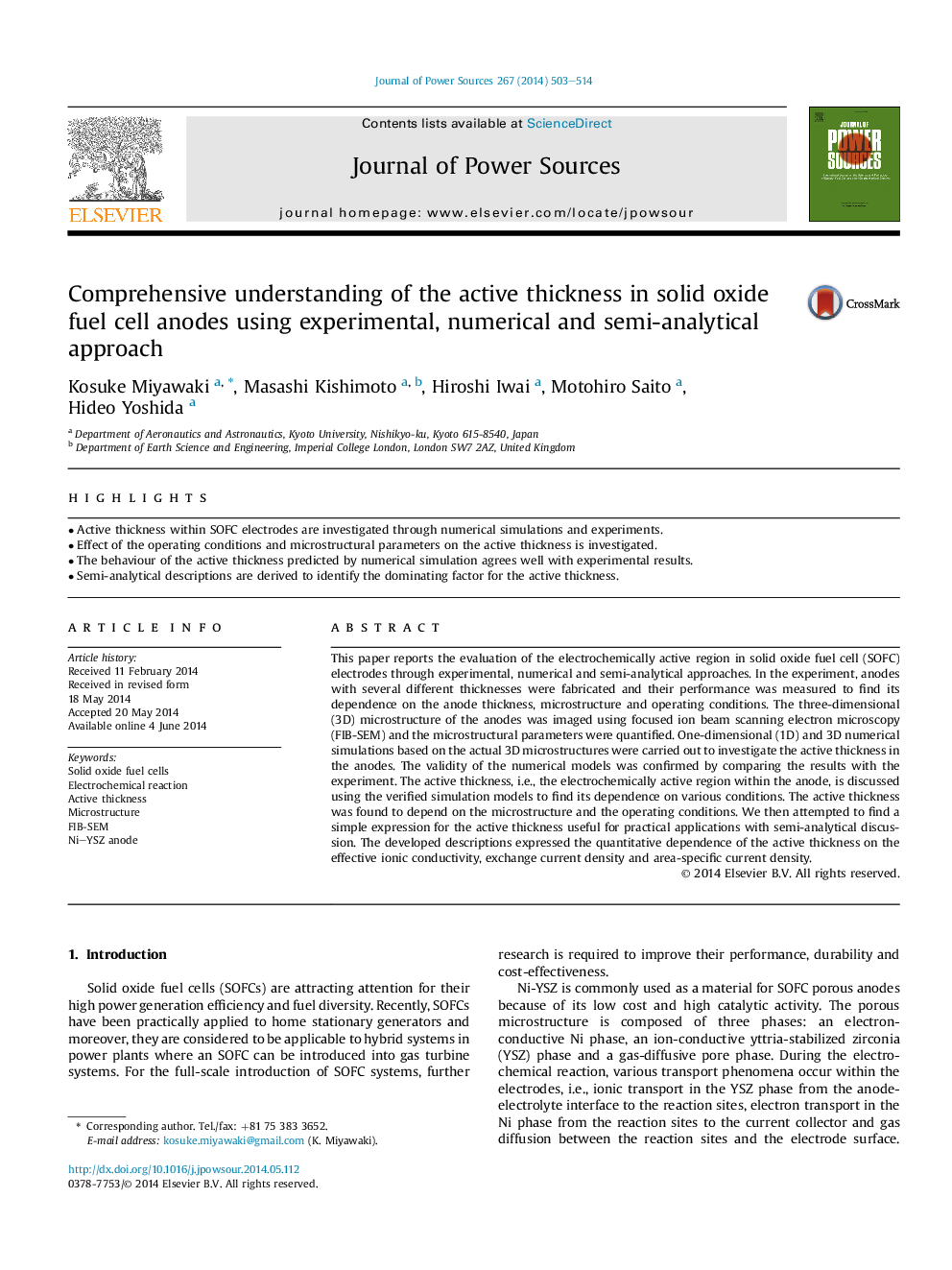| Article ID | Journal | Published Year | Pages | File Type |
|---|---|---|---|---|
| 1286588 | Journal of Power Sources | 2014 | 12 Pages |
•Active thickness within SOFC electrodes are investigated through numerical simulations and experiments.•Effect of the operating conditions and microstructural parameters on the active thickness is investigated.•The behaviour of the active thickness predicted by numerical simulation agrees well with experimental results.•Semi-analytical descriptions are derived to identify the dominating factor for the active thickness.
This paper reports the evaluation of the electrochemically active region in solid oxide fuel cell (SOFC) electrodes through experimental, numerical and semi-analytical approaches. In the experiment, anodes with several different thicknesses were fabricated and their performance was measured to find its dependence on the anode thickness, microstructure and operating conditions. The three-dimensional (3D) microstructure of the anodes was imaged using focused ion beam scanning electron microscopy (FIB-SEM) and the microstructural parameters were quantified. One-dimensional (1D) and 3D numerical simulations based on the actual 3D microstructures were carried out to investigate the active thickness in the anodes. The validity of the numerical models was confirmed by comparing the results with the experiment. The active thickness, i.e., the electrochemically active region within the anode, is discussed using the verified simulation models to find its dependence on various conditions. The active thickness was found to depend on the microstructure and the operating conditions. We then attempted to find a simple expression for the active thickness useful for practical applications with semi-analytical discussion. The developed descriptions expressed the quantitative dependence of the active thickness on the effective ionic conductivity, exchange current density and area-specific current density.
